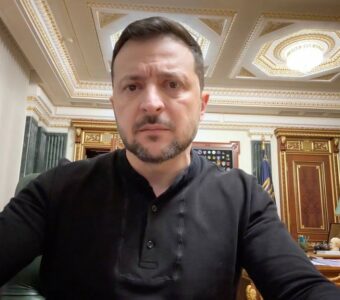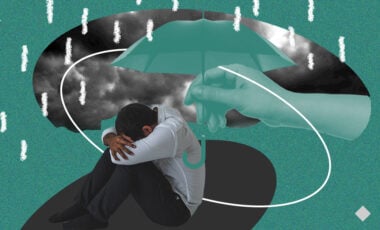Lessons for Ukraine: How its partners build and prepare their armies for defense
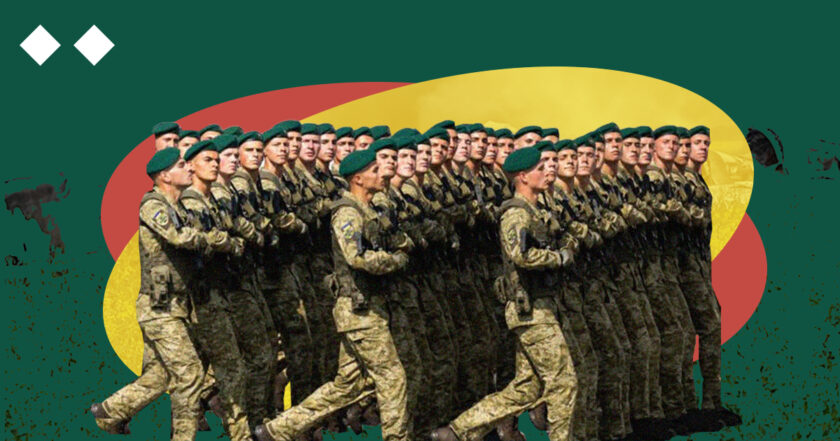
President Volodymyr Zelensky recently signed a new law updating mobilization approaches to build reinforcements for the Ukrainian Armed Forces fighting against the Russian onslaught on the front lines in the country's east and south. The legislation will go into effect in a month, but not entirely — some of its provisions will come into force later.
Starting September 1, 2025, basic military service will replace the conscription military service. It will last up to five months in peacetime and up to three months during martial law. In both cases, the law requires a two-month specialized training period and a three-month or one-month basic military training for new soldiers.
According to the regulation, this training will be incorporated into the curricula of all universities and educational institutions with specific conditions, such as those training police officers, as a separate subject. Meanwhile, those planning to enter public service for the first time, work in local government, take positions in prosecution offices, and other citizens will be trained by choice in the centers of the Armed Forces of Ukraine.
This training aims to equip Ukrainian citizens with military occupational skills, knowledge, and abilities necessary to fulfill their constitutional duty to defend their homeland, independence, and territorial integrity. The public finds this concept concerning as it reminds them of the possibility of being drafted into war.
A recent survey by the Rating Sociological Group showed that 36% of citizens believe that the level of mobilization in Ukraine is insufficient. In comparison, 30% think it's optimal, and 19% find it too high. The age demographics of the survey are interesting: respondents over 60 years old mostly think the level of mobilization is insufficient, while 18-29-year-olds find it optimal (45%) or too high (29%), and among 30-39-year-olds, the numbers are 36% and 27%, respectively.
A simple conclusion comes to mind: the people most in favor of drafting recruits are those unlikely to be drafted due to age. Traditional media and various TikTok videos widely report this online, pointing out the scope of the problem. Regardless of their view on mobilization levels, citizens believe in Ukraine's victory in the war, indicating a substantial gap from reality.
Public sentiment appears divided, with a strange coexistence of a desire for victory and a reluctance for personal involvement in achieving it. It's as if the Armed Forces are a separate entity, and victory can happen without people. Against this backdrop, the rise of supporters of negotiations with Russia seems logical. Regardless of the rationale behind these calls ("no more dying for politicians' interests," "no territory is worth our soldiers' lives," "we are a free nation in a free country," "just let everyone leave if they want to"), they are equally short-sighted. There are higher chances of continued Russian aggression after a short (3–5 years) break than an unequivocal peace following any agreement on Russian terms.
Beyond national fatigue and Russian psychological warfare, this sentiment is also driven by the failure of Western partners to meet their commitments to Ukraine. However, recent statements from Germany about seeking air defense systems, the Netherlands' willingness to acquire them for Ukraine, unexpected revelations from US House Speaker Johnson, and other events inspire hope that the period of forced stagnation with Western support is ending.
While Russia continues to bomb Ukraine and occasionally threatens its partners with nuclear fallout, Europeans are beginning to view their safety as a reprieve, albeit an 80-year-long one. Not everyone sees the hostilities in Ukraine as the start of a global war. While some scramble to find shells in nearby and distant arsenals, others are in no hurry to share what's gathering dust. Let's not point fingers, but many countries recognize the causal links and understand that a Russian triumph in Eastern Europe literally opens the door to the West because Europeans lulled by 80 years without war are not ready to meet a new horde. As a result, defense budgets are growing, ammunition production is being restarted, and military equipment manufacturing is on the rise.
Despite the perception of this war as the first drone war, the primary resource for defending a country is its people, and their willingness to take up arms is a crucial condition for success. Different European countries' readiness translates into varied public willingness to fight. If Russia attacks, only 16% of Poles would volunteer for the army, but 34% of Estonians would be ready to participate in defense, with another 30% more likely to do so than not. These findings reflect a pattern: the more serious the attitude toward army service, the stronger the intention to defend.
The foreign experience of army recruitment during peacetime may not be relevant to combat situations in Ukraine. However, war can happen in otherwise calm and reputable European countries, and they understand this and prepare responsibly.
Switzerland
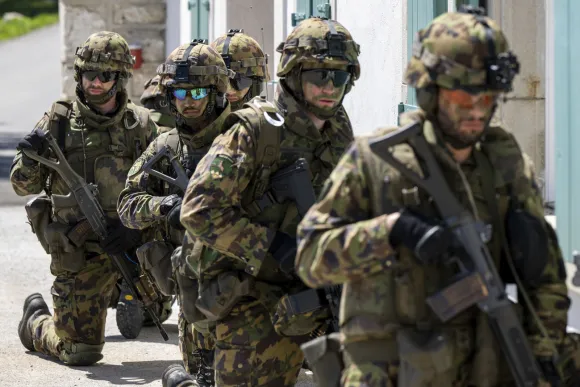
Swiss soldiers at training. Photo: Keystone/Martial Trezzin
Switzerland has a long-standing tradition of neutrality that prevents it from supplying Ukraine with locally produced weapons and military equipment, even though the country has plenty to offer. This restriction frustrates Ukrainians, who view Switzerland's neutral status as exempting it from the need to maintain a strong military. The Swiss army last fought during the Sonderbund Civil War in 1847, yet it's often cited as a model of combat readiness, discipline, and motivation.
The recipe for Switzerland's military success lies in its concept of "total resistance." World War II, which Switzerland avoided for various reasons, shaped its modern military positioning as the "land of lakes." In the Swiss General Staff's view, their territory is seen as the primary theater of operations, suggesting that the enemy can and should be forced to play by Switzerland's rules, where the entire population is expected to resist. The organization of Switzerland's military preparation is unique because the modern Swiss army is structured as a cadre-militia system. With a total armed forces strength of 147,000 (40,000 in active reserve and 1.8 million in mobilization reserve), professional military personnel (officers and sergeants) make up about 5%, while the rest serve under general military duty.
Swiss soldiers have civilian professions and are called to service weekly or in groups over several years. All physically fit men aged 20–34 serve 18–21 weeks. In subsequent years, they undergo annual retraining until they reach the required number of service days, a maximum of 262 days, typically completed over seven years. Higher-ranking officers have no upper limit, but captains retire at 42, majors and lieutenant colonels at 50, and colonels at 55.
Since 1996, those subject to conscription can choose alternative civilian service instead of mandatory military service. Failure to fulfill military duty, not applying for civilian service, or refusing medical evaluations for fitness assessments can result in fines, community service, or even imprisonment.
Proposals to end general conscription occasionally surface as legislative initiatives, but they are either rejected by parliament (in 2011) or not supported by the public in referendums (in 2013). The only area where the Swiss haven't reached a complete consensus is whether mandatory military service discriminates against men, as women serve voluntarily.
What's intriguing is that the Swiss Constitution mandates military service for men while also enshrining the principle of gender equality. However, the idea of mandatory military duty for women has never been seriously considered and remains a topic of debate among human rights advocates.
Despite plans to reduce the army to 100,000 (140,000 including the reserve), the Swiss have no intention of abandoning their conscription-based military structure.
Estonia
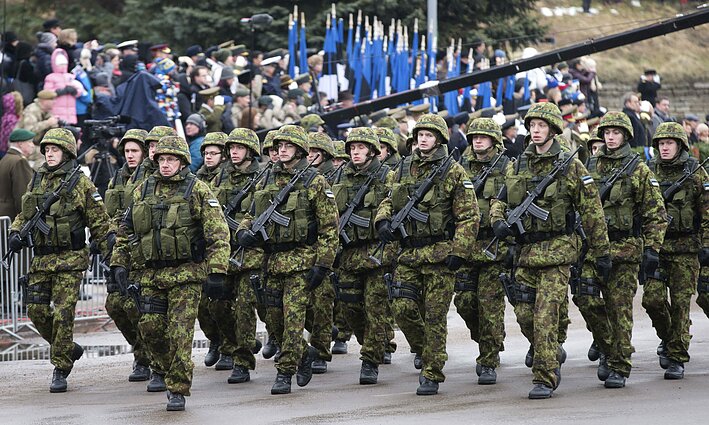
Soldiers of the Estonian Armed Forces. Photo: AP
Estonia has shown impressive support for the Armed Forces of Ukraine and Ukrainians in terms of GDP and actual aid percentage. However, Estonians are still able to defend themselves.
The Estonian Constitution mandates military service for all men between 17 and 27 years of age. It also includes alternative service for those who refuse military duty on religious or other grounds. This service can last up to a year but at least eight months.
In addition to the regular armed forces, Estonia has a voluntary paramilitary organization called the Kaitseliit (Defense League), established in 1918 from armed self-defense units. By 1940, the Kaitseliit had more than 42,000 trained fighters equipped with tanks and artillery. Under Soviet rule, the organization lost its autonomy, but in 1992, the Defense League was rearmed, and its members were granted military ranks and the rights of regular army officers. Today, Kaitseliit units operate in all 15 counties of Estonia, with over 18,000 active members, while the total size of the Estonian Armed Forces is about 5,000 (with 60,000 in reserve).
The modern goal of the Kaitseliit is to increase people's readiness to defend Estonia's independence and constitutional order, relying on free will and voluntary initiative. To achieve this, members "invest their free time, the will to defend, and their military and civil competence to enhance the sense of security and well-being in Estonia."
Membership in the Kaitseliit is open to Estonian citizens aged 18 and above. However, discussions are ongoing about allowing permanent residents without citizenship to join. Along with its affiliate associations (the women's organization Naiskodukaitse, the national scouting organization for boys Noored Kotkad, and the girls' group Kodutütred), all aimed at promoting homeland defense, patriotic views and encouraging self-defense, the Kaitseliit unites over 30,000 Estonians under the jurisdiction of the Ministry of Defense.
A special law allows volunteers to keep weapons (Israeli Galil submachine guns or Swedish AKs with ammunition) at home. Obtaining a gun license in Estonia is reportedly more straightforward than getting a driver's license.
Denmark
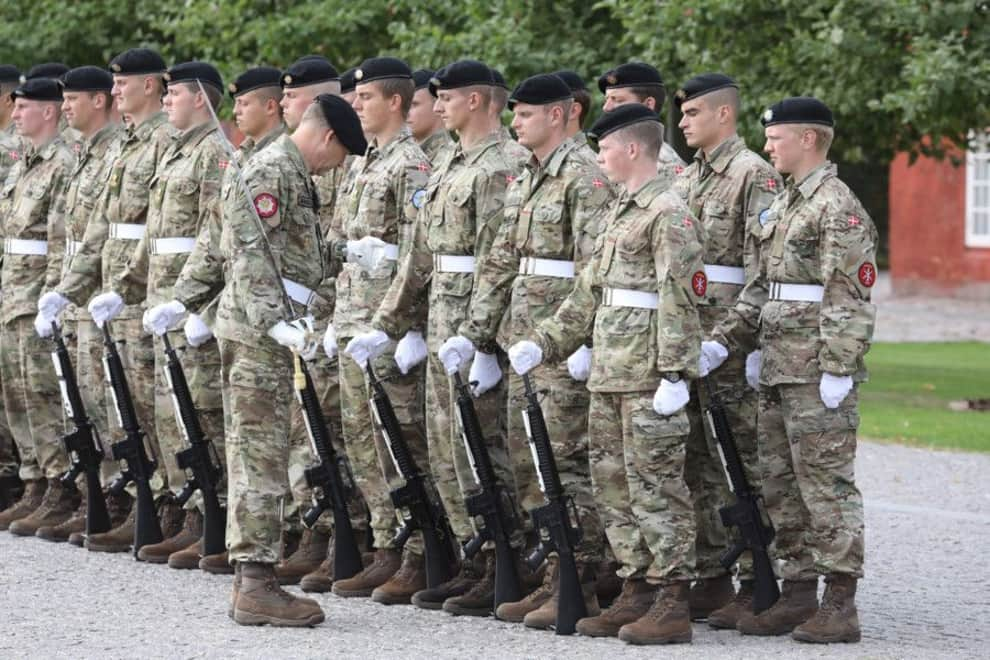
Soldiers of the Danish army. Photo: Ludivic Marin/AFP)
Despite transferring all its 19 Caesar self-propelled howitzers to Ukraine and providing other assistance, Denmark maintains a conscription-based military system. The Danish army operates with mandatory service, typically lasting up to one year. Some senior officer positions are filled by professional military personnel under contract, which is typical rather than unique.
Denmark has a distinctive component in its army alongside the traditional land forces, air force, and navy — the Home Guard (Hjemmeværnet). This internal, or domestic, guard has specialized infantry, aviation, and naval units. It isn't a separate army but rather a significant paramilitary formation that provides auxiliary support to each military branch, with about 13,000 active members and 30,000 in the reserve. The Home Guard is notable for its volunteer-based, unpaid service.
The official mission of the Home Guard is to be ready to defend Denmark when society needs it. While this focus on readiness might seem laid-back, it is deceptive. First, the Home Guard volunteers undergo training almost identical to that of conscripts, developing similar skills and competencies. Second, apart from military security and anti-sabotage work, they also conduct patrols in their designated areas, carry out search and rescue missions on land and sea, and assist police and emergency responders during crises. Third, despite its name, the Home Guard is not strictly "domestic" — 400 of its personnel supported the KFOR mission in Kosovo, and from 2015-2018, it served in Africa and the Middle East (in Mali, Kenya, Kuwait, and Iraq). Since 2010, the Home Guard has trained instructors for the Georgian National Guard. Finally, Home Guard volunteers collectively dedicate about 2 million hours of service annually, with their only reward being free access to over 300 training programs and courses approved by the Danish Armed Forces.
The Home Guard has a high level of mobilization readiness. Thanks to storing their uniforms, personal weapons, and ammunition at home, they can reach assembly points and prepare for tasks within six hours.
Conclusions for Ukrainians
Russia's aggression has been the most violent and consequential conflict in Europe since World War II. Neither side is yet capable of winning, which is why it is increasingly lethal. This phenomenon is fueled by modern long-range weapons, unmanned surface, underwater, aerial vehicles, artillery, and minefields. Yet, the most significant takeaway from this war is that, like 80, 110, or more years ago, combat operations are fought by people who attack and defend.
None of the examples analyzed guarantees complete readiness to face the scale of assault that Ukrainians experienced on February 24, 2022, when Russia started its full-scale war. There's no certainty that the hypothetical Estonians wouldn't falter under a barrage of missiles or rocket fire from Russian launchers. However, these countries are watching the situation and can react accordingly, drawing on their long-standing traditions of preparedness, whether spanning decades or even centuries. In contrast, Ukraine's preparation history is only about ten years old — a minuscule span compared to Russia's continuous expansion, yet significant compared to European nations' theoretical experience of war without actual combat.
Despite the challenges in practical mobilization and its legal framework, one thing is clear — without Ukrainian people, there would be no Ukrainian army. Without an army, there would be no Ukraine.




